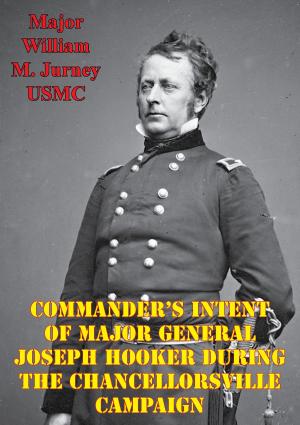The Rebel Shore
The Story of Union Sea Power in the Civil War
Nonfiction, History, Modern, 19th Century, Americas, United States, Civil War Period (1850-1877), Military| Author: | James M. Merrill | ISBN: | 9781787203716 |
| Publisher: | Golden Springs Publishing | Publication: | February 7, 2017 |
| Imprint: | Golden Springs Publishing | Language: | English |
| Author: | James M. Merrill |
| ISBN: | 9781787203716 |
| Publisher: | Golden Springs Publishing |
| Publication: | February 7, 2017 |
| Imprint: | Golden Springs Publishing |
| Language: | English |
First published in 1957, this book details the important part that the sea power played in winning the Civil War.
“IN the past few decades there has been a resurgence of interest in the Civil War reflected in an avalanche of Civil War novels, biographies, and monographs. The writers responsible for this torrent have for the most part focused attention on the battlefields, the halls of Congress, the economics of war, and the actors, big and small. The role of sea power has been minimized. The best work on Civil War naval operations is still Boynton’s two-volume work published in 1867. No author to date has sifted the countless number of official naval dispatches or unearthed personal correspondence of Yankee bluejackets and attempted to evaluate the importance of Lincoln’s forces afloat. The reason is not difficult to find. The Civil War generation—a generation weaned on the marching armies of the Mexican War and the American West—read column after column in its newspapers and listened to politicians in and out of Congress raving about the military achievements or defeats. Misunderstood by the Lincoln Administration, the war correspondents, and the public at large, the operations of the Union sea arm were given scant publicity.
“Union amphibious attacks spearheaded the offensive. They were, perhaps, more significant than the blockade itself. Old Abe’s Armada carried the flag first into the South, secured needed bases for the blockading squadrons, wiped out Confederate coastal commerce, scotched privateering activities, precipitated the ruckus between the secessionist states and the Confederate Government, and, throughout the first year of the conflict, while the Union Army licked its wounds after Bull Run, buoyed up a sagging Northern spirit and strengthened the belief that the Union could crush the rebellion.”
First published in 1957, this book details the important part that the sea power played in winning the Civil War.
“IN the past few decades there has been a resurgence of interest in the Civil War reflected in an avalanche of Civil War novels, biographies, and monographs. The writers responsible for this torrent have for the most part focused attention on the battlefields, the halls of Congress, the economics of war, and the actors, big and small. The role of sea power has been minimized. The best work on Civil War naval operations is still Boynton’s two-volume work published in 1867. No author to date has sifted the countless number of official naval dispatches or unearthed personal correspondence of Yankee bluejackets and attempted to evaluate the importance of Lincoln’s forces afloat. The reason is not difficult to find. The Civil War generation—a generation weaned on the marching armies of the Mexican War and the American West—read column after column in its newspapers and listened to politicians in and out of Congress raving about the military achievements or defeats. Misunderstood by the Lincoln Administration, the war correspondents, and the public at large, the operations of the Union sea arm were given scant publicity.
“Union amphibious attacks spearheaded the offensive. They were, perhaps, more significant than the blockade itself. Old Abe’s Armada carried the flag first into the South, secured needed bases for the blockading squadrons, wiped out Confederate coastal commerce, scotched privateering activities, precipitated the ruckus between the secessionist states and the Confederate Government, and, throughout the first year of the conflict, while the Union Army licked its wounds after Bull Run, buoyed up a sagging Northern spirit and strengthened the belief that the Union could crush the rebellion.”






![Cover of the book Recollections Of A Confederate Staff Officer [Illustrated Edition] by James M. Merrill](https://www.kuoky.com/images/2014/august/300x300/9781782895299-wepu_300x.jpg)
![Cover of the book Reminiscences Of The Civil War [Illustrated Edition] by James M. Merrill](https://www.kuoky.com/images/2015/november/300x300/9781786251824-T47w_300x.jpg)





![Cover of the book Battles And Victories Of Allen Allensworth, A.M., Ph.D., Lieutenant-Colonel, Retired, U.S. Army [Illustrated Edition] by James M. Merrill](https://www.kuoky.com/images/2014/june/300x300/9781782891222-UZeo_300x.jpg)

